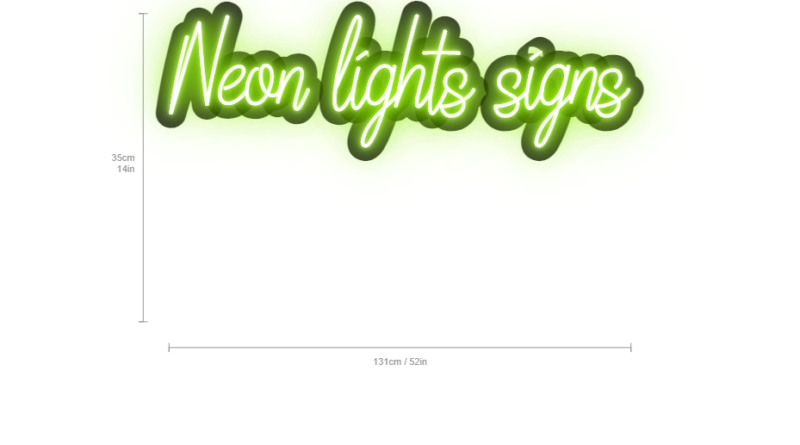The Allure of Neon Lights: How Neon Signage is Shaping Modern Aesthetics
Neon lights have been an iconic part of urban culture since their inception, and in recent years, they have experienced a resurgence in popularity. Once primarily used for commercial purposes, neon signs now have an undeniable presence in art, entertainment, and interior design. With their vibrant, electric glow and vintage charm, neon lights signs have woven themselves into the fabric of modern aesthetics, giving businesses, homes, and public spaces a unique visual identity.
A History of Neon Lights
Neon lighting was first introduced in the early 20th century by French engineer Georges Claude, who demonstrated neon gas-filled tubes as a new form of lighting at the Paris Motor Show in 1910. Soon after, neon signs began to light up the streets of major cities like New York and Los Angeles, becoming synonymous with the bustling, bright lights of the city. The most famous example is the “Welcome to Las Vegas” sign, which epitomizes neon’s association with entertainment and nightlife.
Despite their initial popularity in the mid-20th century, the rise of more energy-efficient lighting options like LED bulbs pushed neon signs to the sidelines in the late 20th century. However, with the growing trend of nostalgia and retro aesthetics, neon lights made a major comeback in the 21st century, reviving a sense of vintage glamour and creativity in urban and interior design.
The Science Behind Neon Lights
Neon lights get their signature glow from the gas they contain. Neon gas is electrically charged, and when electricity passes through it, the gas lights up in a brilliant, reddish-orange hue. Different colors are achieved by using different gases, such as argon for blue or mercury for green, or by applying phosphor coatings inside the tubes. The result is a versatile lighting option that can be molded into any shape, allowing for unlimited artistic expression.
Neon Lights in Modern Culture
Today, neon signs have evolved beyond the realm of businesses and advertisements. They are now featured prominently in art installations, home decor, fashion, and even social media. The vibrant, eye-catching colors of neon lights add an element of energy to any space, making them popular in everything from trendy bars and cafes to personal home offices and bedrooms.
For interior designers, neon lights are a perfect way to add character and ambiance to a room. Customizable neon signs with catchy phrases, inspirational quotes, or abstract designs create a fun, creative atmosphere. Whether it’s a neon quote above a bar area or a glowing piece of art in a living room, these signs are transforming modern interior design.
Neon Signs in Business and Marketing
For businesses, neon signs are a tried-and-true way to attract attention and create brand recognition. Whether it’s a restaurant, a hotel, or a boutique, the vibrant, bold look of a neon sign is impossible to ignore. Neon signage is ideal for businesses aiming to make a strong visual impact in a crowded market. It’s a blend of tradition and modernity, capturing attention in both digital and real-world environments.
Neon Lights and Sustainability
While neon signs are often considered energy-inefficient compared to LEDs, their resurgence has sparked innovations in sustainability. Today, there are eco-friendly neon alternatives, such as LED neon flex, which provides the same bright glow while consuming less energy and being more durable than traditional neon tubes. These new solutions make neon lights more sustainable and accessible than ever before.
Conclusion
Neon lights signs have become much more than just functional signage—they are a cultural symbol, a form of artistic expression, and a way to energize spaces. Whether used in advertising, home decor, or public art, neon lights continue to captivate with their bright, colorful glow. As this timeless medium continues to evolve, we can expect to see even more creative uses for neon in the years to come.




